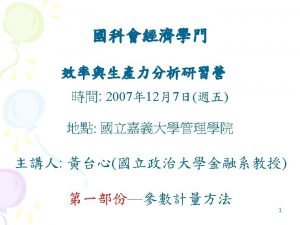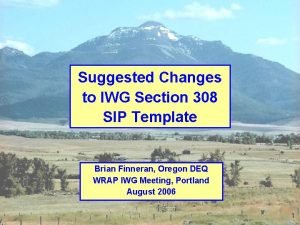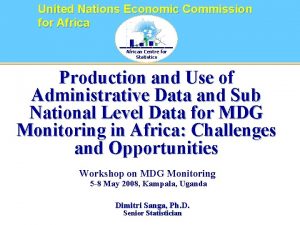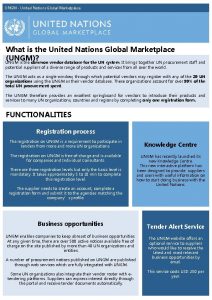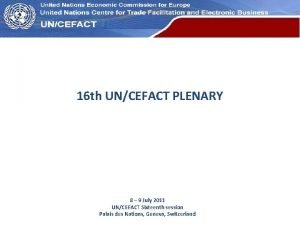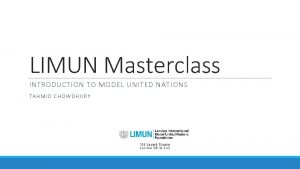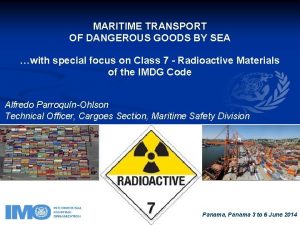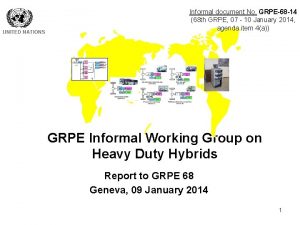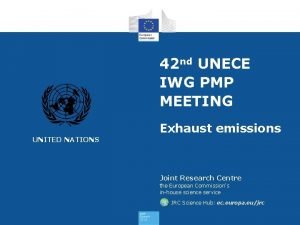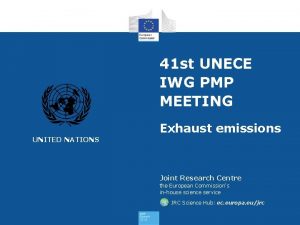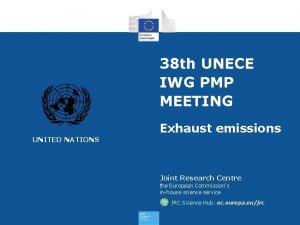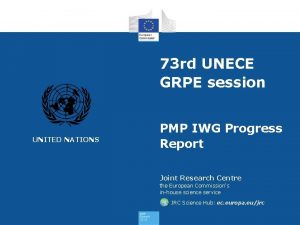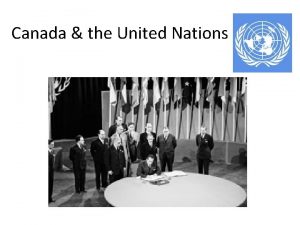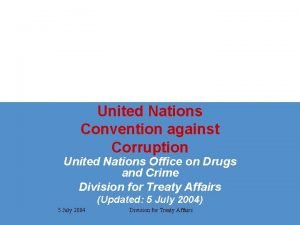42 nd UNECE IWG PMP MEETING UNITED NATIONS











- Slides: 11

42 nd UNECE IWG PMP MEETING UNITED NATIONS Non- exhaust particle emissions Joint Research Centre the European Commission's in-house science service JRC Science Hub: ec. europa. eu/jrc

PMP meetings in 2016 13 th January 2016 (Geneva) : 38 th PMP meeting 9 th-10 th March 2016 (Brussels) : 39 th PMP meeting 27 th April – 3 rd May (Web/phone conference): 40 th meeting 31 st May (Web/phone conference) 12 th-13 th October (JRC-Ispra) : 41 st meeting 2

Current status • The PMP IWG has been working since June 2013 (approval date of the existing To. R) on a number of issues related to both exhaust and non-exhaust particles (i. e. particles from brake and tyre/road wear) o Non-exhaust particles: Literature survey and collection of information on test cycles, sampling/measurement methodologies, on-going projects • All the information collected are available on the UNECE website / PMP webpage 3

Key messages • Brake wear particles: o Industry is very active in researching/developing low emission brake systems – Consensus on the usefulness of a common measurement procedure • Particles from tyre/road wear: o Ultrafine particles generated only under extreme conditions - Many questions still open. Distinguishing the different sources (tyres/road/material deposited on the road) is a challenge 4

New mandate / To. R • The PMP groups has submitted to GRPE in June 2016 an updated draft version of the To. R and request a new mandate with a new specific concrete objective: • Brake wear particles: o Development of a suggested common test procedure for sampling and assessing brake wear particles both in terms of mass and number: 5

Steps for Building a Common Method for Measuring Brake Wear Particles 6

Development of a suggested common method for BW particle investigation – Steps • Selection/Development of an appropriate Braking Test Cycle • Selection of the most suitable methodology for BW Particles Sampling • Selection of the most suitable methodology for BW Particles Measurement and Characterization 7

Step 1 - Selection/development of a braking test cycle ü WLTP Database Analysis (Concluded – Report published by JRC) ü Comparison of WLTP data with Existing Industrial Cycles (Concluded – Results presented at the 41 st PMP meeting) ü Development of a first version of a New Braking Cycle (Deadline: June 2017 – On-going work by a dedicated Task Force) q Task Force is coordinated by JRC but includes the main experts from industry – phone conferences are regularly held (4 so far) – progress report to be presented at the next meeting ü Testing and Validation of the New Cycle - Possible round robin (January 2018) 8

Step 2 - Selection of the most suitable sampling method ü Comparison of existing systems/test rig configurations (Deadline: June 2017 – On-going work by the group) ü Selection of Functional Parameters (Deadline: June 2017 – On-going work by the group) ü Selection of Testing Parameters (Deadline: January 2018) ü Testing and Validation of the Selected Configuration (Deadline: To be defined depending on the progress) 9

Step 3 - Selection of the most suitable methodology for BW Particles Measurement and Characterization ü Comparison of Existing Methodologies (Deadline: June 2017 – Work postponed due to prioritization of steps 1 and 2) ü Selection of the most suitable methodologies based on the selected sampling configuration (Deadline: June 2018) ü Testing and Validation of the Selected Methodologies (Deadline: To be defined depending on the progress) ü Data processing method (Deadline: To be defined) 10

Stay in touch JRC Science Hub: ec. europa. eu/jrc You. Tube: JRC Audiovisuals Twitter and Facebook: @EU_Science. Hub Vimeo: Science@EC Linked. In: european-commission-joint-research-centre 11
